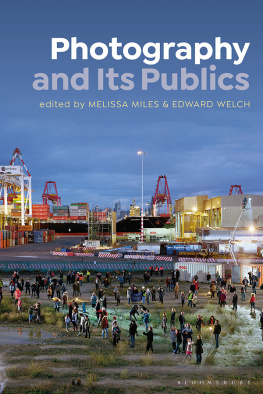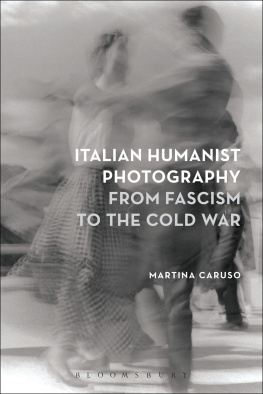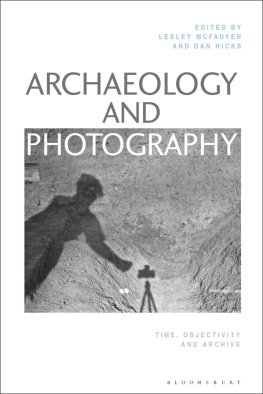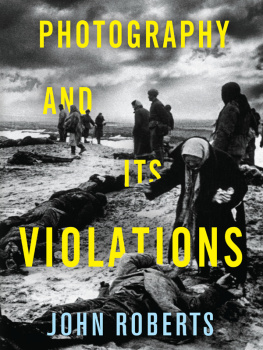
Photography, Truth
and Reconciliation

Contents
Lucila Quieto, Arqueologas de la ausencia (Archaeology of Absence), 19992001.
Gilbert Uzan, Demonstration of the Mothers of the Plaza de Mayo in Buenos Aires, Argentina, 10 June 1978.
Daniel Garcia, March of the Madres de Plaza de Mayo in the rain, 28 April 1983.
Enrique Shore, Pozo de Bnfield, 1984.
Gustavo Germano, Ausencias (Argentina), 2006 (detail).
Gustavo Germano, Ausencias (Argentina), 2006 (detail).
Gustavo Germano, Ausencias (Argentina), 2006 (detail).
Marcelo Brodsky, pages from the book Tiempo de Arbol/Tree Time, 2013.
Marcelo Brodsky, pages from the book Tiempo de Arbol/Tree Time, 2013.
Ernest Cole, untitled photograph from the book House of Bondage, 1967.
Ernest Cole, untitled photograph from the book House of Bondage, 1967.
Gille de Vlieg, Mrs Anna Shalate Mazibuko holding the shirt of her son Flint, shot in the back by police in Tembisa, 1985.
Colin Richards, Veil VII from the body of work Veronica Cloth, 1996.
Colin Richards, Veil VIII from the body of work Veronica Cloth, 1996.
Sue Williamson, Cold Turkey: Stories of Truth and Reconciliation (Poison Victim), 1996.
Sue Williamson, Truth Games: Family of Gugulethu Seven why were you smiling Capt. John Sterrenberg, 1998.
Jo Ractliffe, Vlakplaas: 2 June 1999 (drive-by shooting), 1999.
Jo Ractliffe, Vlakplaas: 2 June 1999 (drive-by shooting), 1999 (detail).
Jillian Edelstein, Joyce Mtimkhulu, Zwide, Port Elizabeth, February 1997, from the book Truth and Lies, 2001.
Jabulani Dhlamini, Ayini, Rooistena, Sharpeville, 2015.
Thomas Moore before and after admission to Regina Indian Industrial School.
Students at the Roman Catholic school in Fort George, Qubec, 1939.
Prayer time in the girls dormitory at Cecilia Jeffrey Indian Residential School near Kenora, c.195053.
Carl Beam, Forced Ideas in School Days, 1991.
Carl Beam, Sauvage, 1988.
Where are the Children? exhibition.
Adrian Stimson, Aggressive Assimilation, 2013.
Adrian Stimson, Inhumation, 2008.
Ricky Maynard, Traitor, 2005.
Ricky Maynard, Vansittart Island, Bass Strait, Tasmania, 2005.
Homes Are Sought for These Children.
Brenda L. Croft, She called him son, 1998.
Brenda L. Croft, HALF-CASTE, 2016.
Brenda L. Croft, shut/mouth/scream, 2016.
Brenda L. Croft, Self portraits on Country, 2014.
Mak Remissa, work from the series Left 3 Days, 2014.
Mak Remissa, work from the series Left 3 Days, 2014.
Mak Remissa, work from the series Left 3 Days, 2014.
Photographs on display at the Tuol Sleng Museum.
Vandy Rattana, Rattanakiri II, 2009.
Vandy Rattana, Takeo, 2009.
Vandy Rattana, Khmer Rouge Trial, 2009.
Vandy Rattana, Khmer Rouge Trial, 2009.
Vandy Rattana, Khmer Rouge Trial, 2009.
Khvay Samnang, Human Nature, 201011.
Khvay Samnang, Human Nature, 201011.
Lim Sokchanlina, Wrapped Future (Former Preah Suranarit National Theater, National Assembly Street, Phnom Penh. Cambodia), 2009.
Lim Sokchanlina, Wrapped Future (Former Dey Krohom, East Wall, between Sothearos Boulevard and National Assembly Street, Phnom Penh. Cambodia), 2009.
Research for this book was funded by the Australian Research Council under its Future Fellowship scheme (FT130100012). Monash Universitys Faculty of Art, Design and Architecture provided a very stimulating and supportive environment in which to write this book. I am particularly grateful for the support of Shane Murray, Kathie Barwick, Athena Bangara, Ruth Bain, Callum Morton, Arthur DeBono, Luke Morgan, Sarah Coleman and Kristy Davidson, who together help to create an environment in which researchers can flourish. This project also benefitted greatly from the help of other generous colleagues. Bain Attwood, Jane Lydon and the late Andrea Noble offered thoughtful advice on the development of this project at its early stages. Thanks also to Berber Bevernage for providing access to his very compelling, pre-published work. Along with the anonymous peer reviewers, Robin Gerster and Amanda Nettelbeck read chapters and offered feedback that improved the depth and flow of the arguments. Research Assistants Jessica Neath, Kate Warren and Isabella Offner assisted with gathering literature and managing image permissions at various stages of the project. In particular, Kate Warrens commitment, attention to detail and efficiency in the final year of this project was invaluable.
At Bloomsbury, Molly Beck, Nick Bellorini and Sophie Tann helped bring this book to fruition, each enthusiastically lending their support at different stages from proposal to publication. Heather Cushing at Future Perfect Editorial Services was a very thoughtful and thorough copyeditor. I am also deeply indebted to the photographers whose work is the focus of this book, and who kindly shared their time, ideas and their work in some very thought-provoking and enlightening discussions. Their willingness to provide permission to reproduce the photographs in this book is very much appreciated. Thanks also to Latinstock, the Centro Cultural de la Memria Haroldo Conti in Buenos Aires, the National Archives of Australia, Stills Gallery in Sydney, the Ernest Cole Family Trust, the Haaselblad Foundation, Penny Siopis, Iziko South African National Gallery, the Stevenson Gallery in Cape Town, National Archives of Canada, Deschtelets Archives, The Presbyterian Church in Canada Archives, Canada Council Art Bank, Glenbow Museum in Calgary, Isabelle Lesser at Asia Motion, Erin Gleeson at Sa Sa Bassac, Getty Images, Alamy and Viscopy for sharing ideas and suggestions, and assisting with reproductions.
Finally, I thank my partner Paul for his unwavering support, love, patience and encouragement throughout this project.
This photograph was taken by the Argentine artist Lucila After inviting participants to select a photograph from their family albums, Quieto scanned it and projected it onto a wall. Quieto then prompted her subjects to place themselves between the projector and the wall, and interact with the image as she took a new photograph.

Lucila Quieto, Arqueologas de la Ausencia (Archaeology of Absence), 19992001. Rafael Wollmann/Gamma-Rapho/Getty Images.
As Castelli was blanketed by the projected grain of the family photograph and inserted into its pictorial field, she became part of a much-desired photograph with her mother. Castellis position seated next to her mother creates a sense of compositional unity. However, disjunctions in scale, materiality and setting between the enlarged projection of the crinkled 1970s photograph of Trotta crouched on the street and the contemporary photograph of Castelli seated indoors suggest that this meeting of the past and the present is not designed to achieve a neat resolution. Castellis hope of finding her missing sister was realized in 2008, thirty-one years after she was taken from her family.
Next page













